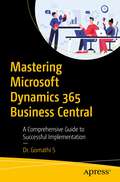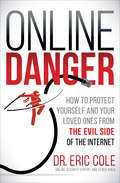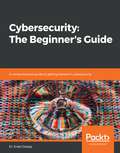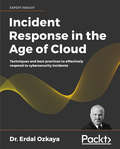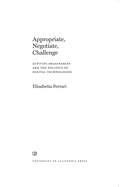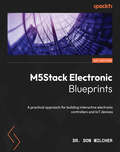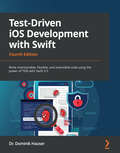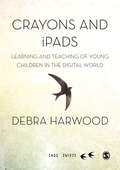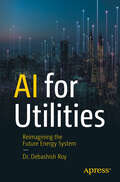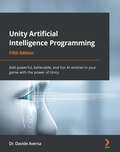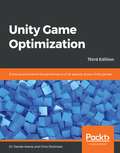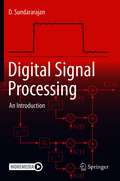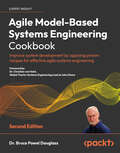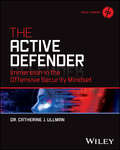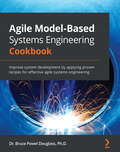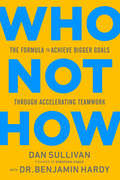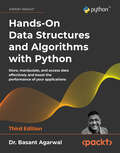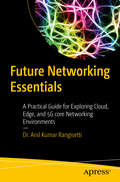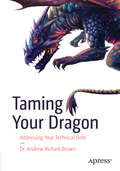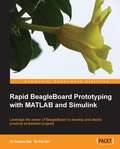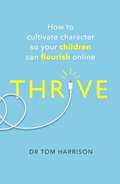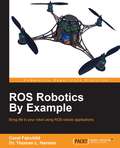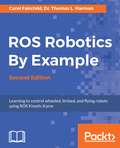- Table View
- List View
Mastering Microsoft Dynamics 365 Business Central: A Comprehensive Guide to Successful Implementation
by Dr. Gomathi SGet ready to ace Microsoft Dynamics 365 Business Central and usher in an era of streamlined efficiency, enhanced productivity, and growth. This guide book is your trusty companion on your journey to becoming an ERP implementation pro. The book will take you through the entire implementation process, from initial planning to successful deployment and beyond.The book starts with an introduction to Business Central and the benefits of its implementation. It discusses pre-implementation planning and vendor selection and partnership, and you will learn budgeting and timeline along with evaluating implementation partners. You will go through project management methodologies and learn about resource allocation and team roles. Data migration and cleansing are discussed, along with configuration and customization. You will learn about change management and user adoption, as well as Integration with existing systems. The book takes you through testing and quality assurance, and you will understand how to prepare for Go-Live. You also will learn common implementation challenges and solutions, and future trends in ERP and Business Central.After reading this book, you will be able to discover the full potential and make the most out of Microsoft Dynamics 365 Business Central.What Will You LearnMaster the complete process of Microsoft Dynamics 365 Business Central implementationImplement effective strategies to drive user adoption and overcome resistance to changeStay ahead of the curve by exploring emerging trends in the ERP landscapeUtilize practical tools and checklists to streamline implementation tasksGain insights from case studies for practical implementation strategiesWho This Book Is ForProject managers, business analysts, and ERP consultants
Online Danger: How to Protect Yourself and Your Loved Ones from the Evil Side of the Internet
by Dr. Eric ColeA cybersecurity expert offers helpful tips and easy-to-follow instructions on how to keep you, your family, and your business safer online. The Internet is an informative, fun, and educational resource for the entire family, but it also has its own risks and dangers. From phishing to cyberbullying to identity theft, there are myriad ways you could be harmed online, often with irreparable damage. Fortunately, there are precautions everyone can take to protect themselves, their families, and their businesses—and they don&’t require technical expertise. In this book, cybersecurity expert Dr. Eric Cole, provides a layman&’s look at how to protect yourself online. Whether you&’re a parent wanting to keep your children safe online; a senior citizen who doesn&’t want to fall prey to the latest scam; a doctor, lawyer, or teacher who is responsible for safeguarding sensitive data; or simply a technology user who wants to protect themselves in cyberspace, Cole explains in plain language the many steps you can take to make your computer safer, protect your email, guard your online accounts, and more.
Cybersecurity: A comprehensive guide to getting started in cybersecurity
by Dr. Erdal OzkayaUnderstand the nitty-gritty of Cybersecurity with easeKey FeaturesAlign your security knowledge with industry leading concepts and toolsAcquire required skills and certifications to survive the ever changing market needsLearn from industry experts to analyse, implement, and maintain a robust environmentBook DescriptionIt's not a secret that there is a huge talent gap in the cybersecurity industry. Everyone is talking about it including the prestigious Forbes Magazine, Tech Republic, CSO Online, DarkReading, and SC Magazine, among many others. Additionally, Fortune CEO's like Satya Nadella, McAfee's CEO Chris Young, Cisco's CIO Colin Seward along with organizations like ISSA, research firms like Gartner too shine light on it from time to time.This book put together all the possible information with regards to cybersecurity, why you should choose it, the need for cyber security and how can you be part of it and fill the cybersecurity talent gap bit by bit. Starting with the essential understanding of security and its needs, we will move to security domain changes and how artificial intelligence and machine learning are helping to secure systems. Later, this book will walk you through all the skills and tools that everyone who wants to work as security personal need to be aware of. Then, this book will teach readers how to think like an attacker and explore some advanced security methodologies. Lastly, this book will deep dive into how to build practice labs, explore real-world use cases and get acquainted with various cybersecurity certifications.By the end of this book, readers will be well-versed with the security domain and will be capable of making the right choices in the cybersecurity field.What you will learnGet an overview of what cybersecurity is and learn about the various faces of cybersecurity as well as identify domain that suits you bestPlan your transition into cybersecurity in an efficient and effective wayLearn how to build upon your existing skills and experience in order to prepare for your career in cybersecurityWho this book is forThis book is targeted to any IT professional who is looking to venture in to the world cyber attacks and threats. Anyone with some understanding or IT infrastructure workflow will benefit from this book. Cybersecurity experts interested in enhancing their skill set will also find this book useful.
Incident Response in the Age of Cloud: Techniques and best practices to effectively respond to cybersecurity incidents
by Dr. Erdal OzkayaLearn to identify a security incident and build a series of best practices to stop a cyberattack before it creates serious consequencesKey FeaturesDiscover Incident Response (IR), from its evolution to implementationUnderstand cybersecurity essentials and IR best practices through real-world phishing incident scenariosExplore the current challenges in IR through the perspectives of leading figures in the cybersecurity communityBook DescriptionCybercriminals are always in search of new methods and ways to infiltrate systems. Quickly responding to an incident should help an organization minimize its losses, decrease vulnerabilities, and rebuild services and processes. In the wake of the COVID-19 pandemic, with most organizations gravitating towards remote working and cloud computing, this book provides updated IR processes to address the associated security risks. The book begins by introducing you to the cybersecurity landscape and explaining why IR matters. You will understand the evolution of IR, current challenges, key metrics, and the composition of an IR team, along with an array of methods and tools used in an effective IR process. You will then learn how to apply this conceptual toolkit, with discussions on incident alerting, handling, investigation, recovery, and reporting. Further, you will cover governing IR on multiple platforms and sharing cyber threat intelligence, and the procedures involved in IR in the cloud – the challenges, opportunities, and how to secure your cloud environments. Finally, the book concludes with an “Ask the Experts” section where industry experts have provided their perspective on diverse topics in the IR sphere. By the end of this book, you should become proficient at building and applying IR strategies pre-emptively and confidently. What you will learnUnderstand IR and its significanceOrganize an IR teamExplore best practices for managing attack situations with your IR teamForm, organize, and operate a product security team to deal with product vulnerabilities and assess their severityOrganize all the entities involved in product security responseRespond to a security vulnerability based on Keepnet Labs processes and practicesAdapt all the above learnings for the cloudWho this book is forThis book is aimed at first-time incident responders, cybersecurity enthusiasts who want to get into IR, and anyone who is responsible for maintaining business security. It will also interest CIOs, CISOs, and members of IR, SOC, and CSIRT teams. However, IR is not just about information technology (IT) or security teams, and anyone with a legal, HR, media, or other active business role would benefit from this book.The book assumes you have some admin experience. No prior DFIR experience is required. Some infosec knowledge will be a plus but isn't mandatory.
Appropriate, Negotiate, Challenge: Activist Imaginaries and the Politics of Digital Technologies
by Dr. Elisabetta FerrariActivists use digital technologies to communicate, coordinate, and organize for social change. But these big corporate digital platforms are also used to spread disinformation, racism, and abuse. Appropriate, Negotiate, Challenge investigates the relationship between activism and technology, focusing on how activists think and talk about technology’s role in social change and what this tells us about the politics of digital technologies. Researching movements in Italy, Hungary, and the United States, Elisabetta Ferrari examines how leftist activists construct technological imaginaries that appropriate, negotiate, and challenge Silicon Valley’s vision of technology. She argues that these imaginaries reflect and shape the politics of social movements: they matter for how activists think about their political possibilities. Ultimately, Ferrari centers the political and imaginative work that activists need to perform in order to navigate the politics of mainstream digital technologies.
Hands-On Design Patterns with Java: Learn design patterns that enable the building of large-scale software architectures
by Dr. Edward LavieriUnderstand Gang of Four, architectural, functional, and reactive design patterns and how to implement them on modern Java platforms, such as Java 12 and beyondKey FeaturesLearn OOP, functional, and reactive patterns for creating readable and maintainable codeExplore architectural patterns and practices for building scalable and reliable applicationsTackle all kinds of performance-related issues and streamline development using design patternsBook DescriptionJava design patterns are reusable and proven solutions to software design problems. This book covers over 60 battle-tested design patterns used by developers to create functional, reusable, and flexible software. Hands-On Design Patterns with Java starts with an introduction to the Unified Modeling Language (UML), and delves into class and object diagrams with the help of detailed examples. You'll study concepts and approaches to object-oriented programming (OOP) and OOP design patterns to build robust applications. As you advance, you'll explore the categories of GOF design patterns, such as behavioral, creational, and structural, that help you improve code readability and enable large-scale reuse of software. You’ll also discover how to work effectively with microservices and serverless architectures by using cloud design patterns, each of which is thoroughly explained and accompanied by real-world programming solutions. By the end of the book, you’ll be able to speed up your software development process using the right design patterns, and you’ll be comfortable working on scalable and maintainable projects of any size.What you will learnUnderstand the significance of design patterns for software engineeringVisualize software design with UML diagramsStrengthen your understanding of OOP to create reusable software systemsDiscover GOF design patterns to develop scalable applicationsExamine programming challenges and the design patterns that solve themExplore architectural patterns for microservices and cloud developmentWho this book is forIf you are a developer who wants to learn how to write clear, concise, and effective code for building production-ready applications, this book is for you. Familiarity with the fundamentals of Java is assumed.
M5Stack Electronic Blueprints: A practical approach for building interactive electronic controllers and IoT devices
by Dr. Don WilcherAcquire hands-on knowledge and technical skills for designing and developing aesthetically appealing, interactive devices using ESP32, Arduino, and SNAP circuits with M5Stack CoreKey FeaturesLearn ESP32 microcontroller and M5Stack Core development platform with hands-on projectsCreate aesthetically appealing visuals for technology engagement using the M5Stack Core deviceBuild interactive devices using Arduino and SNAP circuits with the M5Stack Core development platformBook DescriptionAs an embedded systems developer or an IoT developer, you can often face challenges in maintaining focus on prototyping a product concept while using a specific high-level programming language for implementation. To overcome these challenges, the M5Stack Core platform uses an ESP32 microcontroller and block code that allows you to focus on product creation and application instead of the high-level programming language. M5Stack Electronics Blueprints presents various design and prototyping approaches as well as UI layout and electronics interfacing techniques that will help you to become skilled in developing useful products effectively.This book takes you through a hands-on journey for a better understanding of the ESP32 microcontroller and the M5Stack Core's architecture. You'll delve into M5Stack Core topics such as electronic units, light, sound, motion devices, interfacing circuits, SNAP circuit kits, Arduino applications, and building Bluetooth and Wi-Fi IoT devices. Further, you'll explore various M5Stack core applications using a project-based learning method, including the fascinating 32-bit microcontroller device technology.By the end of this book, you'll be able to design and build interactive, portable electronic controllers, IoT, and wearable devices using the M5Stack Core.What you will learnDesign user interfaces using no-code/low code programming languagesPrototype electronic controllers for audio alarms swiftlyWire an M5Stack Core 2 to an Arduino Uno or equivalent to build a touch control relay controllerPrototype Bluetooth IoT controllers efficientlyBuild and code Wi-Fi sniffers and scanner gadgetsPrototype wearable devices with easeCreate ESP32 applications using system block diagram designBuild a DC motor controller operated by a M5Stack Core unitWho this book is forThis book is for practicing embedded systems and IoT developers, electronics and automation technicians, STEM technical educators, students, and hobbyists looking to learn about the ESP32 microcontroller and M5Stack technologies. There is no prerequisite – apart from a desire to learn about ESP32-based electronics and interactive devices, then this book is for you.
Test-Driven iOS Development with Swift: Write maintainable, flexible, and extensible code using the power of TDD with Swift 5.5, 4th Edition
by Dr. Dominik HauserBuild robust applications using TDD with Swift 5.5 and become a TDD expert by writing tests for view controller, views, network code, and even SwiftUI viewKey FeaturesBuild a complete iOS app using test-driven developmentExplore testing view controllers, table views, navigation, and network codeLearn how to write tests for Combine and SwiftUI codeBook DescriptionTest-driven development (TDD) is a proven way to find software bugs earlier on in software development. Writing tests before you code improves the structure and maintainability of your apps, and so using TDD in combination with Swift 5.5's improved syntax leaves you with no excuse for writing bad code.Developers working with iOS will be able to put their knowledge to work with this practical guide to TDD in iOS. This book will help you grasp the fundamentals and show you how to run TDD with Xcode. You'll learn how to test network code, navigate between different parts of the app, run asynchronous tests, and much more. Using practical, real-world examples, you'll begin with an overview of the TDD workflow and get to grips with unit testing concepts and code cycles. You'll then develop an entire iOS app using TDD while exploring different strategies for writing tests for models, view controllers, and networking code. Additionally, you'll explore how to test the user interface and business logic of iOS apps and even write tests for the network layer of the sample app.By the end of this TDD book, you'll be able to implement TDD methodologies comfortably in your day-to-day development for building scalable and robust applications.What you will learnImplement TDD in Swift application developmentDetect bugs before you run code using the TDD approachUse TDD to build models, view controllers, and viewsTest network code with asynchronous tests and stubsWrite code that's a joy to read and maintainDesign functional tests to suit your software requirementsDiscover scenarios where TDD should be applied and avoidedWho this book is forThis book is for iOS developers looking to apply TDD to build maintainable and scalable applications. Intermediate-level developers with Swift application development experience will be able to make the most out of this book. Prior experience of applying TDD to Swift applications is not required.
Crayons and iPads: Learning and Teaching of Young Children in the Digital World (SAGE Swifts)
by Dr. Debra HarwoodCrayons and iPads examines the use of digital technology in the early stages of child development, and the way in which learning techniques have evolved in classrooms across the world. Harwood explores how tablets can be used to provoke, ignite and excite children&’s interest in the world around them, performing as accessible learning and instructional tools, and argues that it is through this engagement with technology that new discoveries are made and learning takes place. Guiding readers through research-based insights into children&’s thinking, interactions and being, Crayons and iPads offers an important starting point upon which to build play and inquiry-based learning opportunities within early learning programs, and will appeal to both educators and researchers across child development, early years education, and digital literacy.
AI for Utilities: Reimagining the Future Energy System
by Dr. Debashish RoyThis transformative book explores the power of artificial intelligence (AI) in revolutionizing the utilities industry. It covers crucial topics such as intelligent grids, decentralized energy resources, customer engagement, electric vehicle integration, and more, providing a comprehensive and practical guide to successfully navigate the energy transition.In today's world, the urgency of addressing climate change and transitioning to sustainable energy systems is undeniable. With approximately 60 percent of global greenhouse gas emissions attributed to the energy sector, utilities play a vital role in achieving sustainability goals. The traditional utility business model faces disruption from renewable energy, changing consumer expectations, and regulatory shifts. Embracing AI emerges as a key solution to optimize operations, enhance grid reliability, and meet evolving customer demands.Through compelling case studies and industry-specific use cases, you will discover how AI drives innovation, improves operational efficiency, and contributes to a greener and more sustainable world. As the demand for cleaner and more sustainable energy practices grows, this book demonstrates how AI can support utilities in meeting these demands, making them more resilient, agile, and customer-centric.Whether you're a seasoned industry expert or a curious student, this book equips you with the knowledge and insights to embrace sustainability, navigate the complex energy landscape, leverage AI to shape a positive future, and join the movement towards a greener world, empowered by AI's potential in the utilities industry.What You Will LearnUnderstand the challenges and opportunities for utilities in the context of climate change, energy poverty, and the evolving business landscapeDiscover how rapid transformation is needed in the utilities sector to overcome challenges and leverage opportunities for a sustainable futureGain insight into the role of technology, particularly artificial intelligence (AI), as a critical tool for utilities in their transformation journeyBe aware of how AI can be applied in building the future utility industry, including its potential impact on energy efficiency, intelligent energy ecosystems, community engagement, and new business modelsGain knowledge of the adoption of AI and machine learning technologies in the utility industry, including the current state, barriers, significant influencing factors, and an AI adoption maturity model for utilitiesRecognize the sustainability imperative for utilities and how AI can help in achieving sustainable energy practicesBecome familiar with the transformation of power generation, microgrids, intelligent transmission and distribution systems, utilities retail, mobility through electric vehicles, and the integration of distributed energy resources(DER) using AIGain insight into the potential of AI in addressing challenges and driving innovation in the energy ecosystem, such as optimizing power generation assets, enhancing grid intelligence, improving customer service, and enabling clean energy awareness in the metaverseWho This Book Is ForProfessionals and decision makers in the global utilities industry who want to leverage artificial intelligence (AI) technologies to transform their operations and address challenges and opportunities in the energy sector. This book may also appeal to researchers, academics, and students in the fields of energy engineering, environmental science, data analytics, and AI who want to gain a deeper understanding of AI in the utilities sector and its implications for sustainable energy systems.
Unity Artificial Intelligence Programming: Add powerful, believable, and fun AI entities in your game with the power of Unity, 5th Edition
by Dr. Davide AversaLearn and implement game AI in Unity to build smart environments and enemies with A* pathfinding, finite state machines, behavior trees, and the NavMeshKey FeaturesExplore the latest Unity features to make AI implementation in your game easierBuild richer and more dynamic games using AI concepts such as behavior trees and navigation meshesImplement character behaviors and simulations using the Unity Machine Learning toolkitBook DescriptionDeveloping artificial intelligence (AI) for game characters in Unity has never been easier. Unity provides game and app developers with a variety of tools to implement AI, from basic techniques to cutting-edge machine learning-powered agents. Leveraging these tools via Unity's API or built-in features allows limitless possibilities when it comes to creating game worlds and characters. The updated fifth edition of Unity Artificial Intelligence Programming starts by breaking down AI into simple concepts. Using a variety of examples, the book then takes those concepts and walks you through actual implementations designed to highlight key concepts and features related to game AI in Unity. As you progress, you'll learn how to implement a finite state machine (FSM) to determine how your AI behaves, apply probability and randomness to make games less predictable, and implement a basic sensory system. Later, you'll understand how to set up a game map with a navigation mesh, incorporate movement through techniques such as A* pathfinding, and provide characters with decision-making abilities using behavior trees. By the end of this Unity book, you'll have the skills you need to bring together all the concepts and practical lessons you've learned to build an impressive vehicle battle game.What you will learnUnderstand the basics of AI in game designCreate smarter game worlds and characters with C# programmingApply automated character movement using pathfinding algorithm behaviorsImplement character decision-making algorithms using behavior treesBuild believable and highly efficient artificial flocks and crowdsCreate sensory systems for your AI worldBecome well-versed with the basics of procedural content generationExplore the application of machine learning in UnityWho this book is forThis Unity artificial intelligence book is for Unity developers with a basic understanding of C# and the Unity Editor who want to expand their knowledge of AI Unity game development.
Unity Game Optimization: Enhance and extend the performance of all aspects of your Unity games, 3rd Edition
by Chris Dickinson Dr. Davide AversaGet up to speed with a series of performance-enhancing coding techniques and methods that will help you improve the performance of your Unity applications Key Features Optimize graphically intensive games using the latest features of Unity such as Electronic Clearance Service (ECS) and the Burst compiler Explore techniques for solving performance issues with your VR projects Learn best practices for project organization to save time through an improved workflow Book Description Unity engine comes with a great set of features to help you build high-performance games. This Unity book is your guide to optimizing various aspects of your game development, from game characters and scripts, right through to animations. You'll explore techniques for writing better game scripts and learn how to optimize a game using Unity technologies such as ECS and the Burst compiler. The book will also help you manage third-party tooling used with the Unity ecosystem. You'll also focus on the problems in the performance of large games and virtual reality (VR) projects in Unity, gaining insights into detecting performance issues and performing root cause analysis. As you progress, you'll discover best practices for your Unity C# script code and get to grips with usage patterns. Later, you'll be able to optimize audio resources and texture files, along with effectively storing and using resource files. You'll then delve into the Rendering Pipeline and learn how to identify performance problems in the pipeline. In addition to this, you'll learn how to optimize the memory and processing unit of Unity. Finally, you'll cover tips and tricks used by Unity professionals to improve the project workflow. By the end of this book, you'll have developed the skills you need to build interactive games using Unity and its components. What you will learn Apply the Unity Profiler to find bottlenecks in your app, and discover how to resolve them Discover performance problems that are critical for VR projects and learn how to tackle them Enhance shaders in an accessible way, optimizing them with subtle yet effective performance tweaks Use the physics engine to keep scenes as dynamic as possible Organize, filter, and compress art assets to maximize performance while maintaining high quality Use the Mono framework and C# to implement low-level enhancements that maximize memory usage and prevent garbage collection Who this book is for The book is intended for intermediate Unity game developers who wants to maximize the performance of their game. The book assumes familiarity with C# programming.
Digital Signal Processing: An Introduction
by Dr. D. SundararajanThis textbook for a one semester introductory course in digital signal processing for senior undergraduate and first year graduate students in electrical and computer engineering departments is concise, highly readable, and yet provides comprehensive coverage of the topic. Each new topic is presented with examples and figures. The highly mathematical content of the topic is presented lucidly to make the learning the subject easier. Practical aspects of the subject are clearly indicated so that the student can apply the principles in real applications. Matlab programs for FIR filter design are provided as supplementary material online.
Agile Model-Based Systems Engineering Cookbook: Improve system development by applying proven recipes for effective agile systems engineering, 2nd Edition
by Dr. Bruce Douglass Dr. Christian HolstGet up to date with the latest recipes for applying agile methodologies and techniques in model-based systems engineering (MBSE) and manage the growing complexity of systems in your organization with ease.Purchase of the print or Kindle book includes a free eBook in PDF format.Key FeaturesUse this updated edition to learn how Agile and MBSE work iteratively and overcome system complexityDevelop key systems engineering products and achieve enterprise objectives with step-by-step recipesBuild efficient system engineering models using tried and trusted best practicesBook DescriptionAgile MBSE can help organizations manage change while ensuring system correctness and meeting customers' needs. But deployment challenges have changed since our first edition. The Agile Model-Based Systems Engineering Cookbook's second edition focuses on workflows – or recipes – that will help MBSE practitioners and team leaders address practical situations that are part of deploying MBSE as part of an agile development process across the enterprise. In this 2nd edition, the Cameo MagicDraw Systems Modeler tool – the most popular tool for MBSE – is used in examples (models are downloadable by readers). Written by a world-renowned expert in MBSE, this book will take you through systems engineering workflows in the Cameo Systems Modeler SysML modeling tool and show you how they can be used with an agile and model-based approach. You'll start with the key concepts of agile methods for systems engineering. Next, each recipe will take you through initiating a project, outlining stakeholder needs, defining and analyzing system requirements, specifying system architecture, performing model-based engineering trade studies, all the way to handling systems specifications off to downstream engineering. By the end of this MBSE book, you'll learn how to implement systems engineering workflows and create systems engineering models.What you will learnLearn how to apply modelling to create and manage important engineering dataApply agile methods to develop systems engineering specificationsCommunicate decisions with downstream subsystem implementation teamsCoordinate with engineers from other disciplinesApply MBSE practices to problems within simple systems or large systemsEnsure accurate systems models via tests, simulation, and verificationWho this book is forIf you are a systems engineer who wants to pursue model-based systems engineering in an agile setting, this book will show you how you can do that without breaking a sweat. Fundamental knowledge of SysML is necessary; the book will teach you the rest.
The Active Defender: Immersion in the Offensive Security Mindset
by Dr. Catherine J. UllmanImmerse yourself in the offensive security mindset to better defend against attacks In The Active Defender: Immersion in the Offensive Security Mindset, Senior Information Security Forensic Analyst Dr. Catherine J. Ullman delivers an expert treatment of the Active Defender approach to information security. In the book, you’ll learn to understand and embrace the knowledge you can gain from the offensive security community. You’ll become familiar with the hacker mindset, which allows you to gain emergent insight into how attackers operate and better grasp the nature of the risks and threats in your environment. The author immerses you in the hacker mindset and the offensive security culture to better prepare you to defend against threats of all kinds. You’ll also find: Explanations of what an Active Defender is and how that differs from traditional defense models Reasons why thinking like a hacker makes you a better defender Ways to begin your journey as an Active Defender and leverage the hacker mindsetAn insightful and original book representing a new and effective approach to cybersecurity, The Active Defender will be of significant benefit to information security professionals, system administrators, network administrators, and other tech professionals with an interest or stake in their organization’s information security.
Agile Model-Based Systems Engineering Cookbook: Improve system development by applying proven recipes for effective agile systems engineering
by Dr. Bruce DouglassWorried about the growing complexity of systems in your organization? Manage it with recipes for applying agile methodologies and techniques in model-based systems engineering (MBSE)Key FeaturesLearn how Agile and MBSE can work iteratively and collaborate to overcome system complexityDevelop essential systems engineering products and achieve crucial enterprise objectives with easy-to-follow recipesBuild efficient system engineering models using tried and trusted best practicesBook DescriptionAgile MBSE can help organizations manage constant change and uncertainty while continuously ensuring system correctness and meeting customers' needs. But deploying it isn't easy.Agile Model-Based Systems Engineering Cookbook is a little different from other MBSE books out there. This book focuses on workflows – or recipes, as the author calls them – that will help MBSE practitioners and team leaders address practical situations that are part of deploying MBSE as part of an agile development process across the enterprise.Written by Dr. Bruce Powel Douglass, a world-renowned expert in MBSE, this book will take you through important systems engineering workflows and show you how they can be performed effectively with an agile and model-based approach. You'll start with the key concepts of agile methods for systems engineering, but we won't linger on the theory for too long. Each of the recipes will take you through initiating a project, defining stakeholder needs, defining and analyzing system requirements, designing system architecture, performing model-based engineering trade studies, all the way to handling systems specifications off to downstream engineering.By the end of this MBSE book, you'll have learned how to implement critical systems engineering workflows and create verifiably correct systems engineering models.What you will learnApply agile methods to develop systems engineering specificationsPerform functional analysis with SysMLDerive and model systems architectures from key requirementsModel crucial engineering data to clarify systems requirementsCommunicate decisions with downstream subsystem implementation teamsVerify specifications with model reviews and simulationsEnsure the accuracy of systems models through model-based testingWho this book is forIf you are a systems engineer who wants to pursue model-based systems engineering in an agile setting, this book will show you how you can do that without breaking a sweat. Fundamental knowledge of SysML is necessary; the book will teach you the rest.
Who Not How: The Formula to Achieve Bigger Goals Through Accelerating Teamwork
by Dan Sullivan Dr. Benjamin HardyThe world's foremost entrepreneurial coach shows you how to make a mindset shift that opens the door to explosive growth and limitless possibility--in your business and your life.Have you ever had a new idea or a goal that excites you... but not enough time to execute it? What about a goal you really want to accomplish...but can't because instead of taking action, you procrastinate? Do you feel like the only way things are going to get done is if you do them? But what if it wasn't that way? What if you had a team of people around you that helped you accomplish your goals (while you helped them accomplish theirs)? When we want something done, we've been trained to ask ourselves: "How can I do this?" Well, there is a better question to ask. One that unlocks a whole new world of ease and accomplishment. Expert coach Dan Sullivan knows the question we should ask instead: "Who can do this for me?"This may seem simple. And it is. But don't let the lack of complexity fool you. By mastering this question, you will quickly learn how billionaires and successful entrepreneurs like Dan build incredible businesses and personal freedom. This book will teach you how to make this essential paradigm-shift so you can: • Build a successful business effectively while not killing yourself • Immediately free-up 1,000+ hours of work that you shouldn't be doing anyway • Bypass the typical scarcity and decline of aging and other societal norms • Increase your vision in all areas of life and build teams of WHOs to support you in that vision • Never be limited in your goals and ambitions again • Expand your abundance of wealth, innovation, relationships, and joy • Build a life where everything you do is your choice--how you spend your time, how much money you make, the quality of your relationships, and the type of work you do Making this shift involves retraining your brain to stop limiting your potential based on what you solely can do and instead focus on the nearly infinite and endless connections between yourself and other people as well as the limitless transformation possible through those connections.
Hands-On Data Structures and Algorithms with Python: Store, manipulate, and access data effectively and boost the performance of your applications, 3rd Edition
by Dr. Basant AgarwalUnderstand how implementing different data structures and algorithms intelligently can make your Python code and applications more maintainable and efficientKey FeaturesExplore functional and reactive implementations of traditional and advanced data structuresApply a diverse range of algorithms in your Python codeImplement the skills you have learned to maximize the performance of your applicationsBook DescriptionChoosing the right data structure is pivotal to optimizing the performance and scalability of applications. This new edition of Hands-On Data Structures and Algorithms with Python will expand your understanding of key structures, including stacks, queues, and lists, and also show you how to apply priority queues and heaps in applications. You'll learn how to analyze and compare Python algorithms, and understand which algorithms should be used for a problem based on running time and computational complexity. You will also become confident organizing your code in a manageable, consistent, and scalable way, which will boost your productivity as a Python developer. By the end of this Python book, you'll be able to manipulate the most important data structures and algorithms to more efficiently store, organize, and access data in your applications.What you will learnUnderstand common data structures and algorithms using examples, diagrams, and exercisesExplore how more complex structures, such as priority queues and heaps, can benefit your codeImplement searching, sorting, and selection algorithms on number and string sequencesBecome confident with key string-matching algorithmsUnderstand algorithmic paradigms and apply dynamic programming techniquesUse asymptotic notation to analyze algorithm performance with regard to time and space complexitiesWrite powerful, robust code using the latest features of PythonWho this book is forThis book is for developers and programmers who are interested in learning about data structures and algorithms in Python to write complex, flexible programs. Basic Python programming knowledge is expected.
Future Networking Essentials: A Practical Guide for Exploring Cloud, Edge, and 5G core Networking Environments
by Dr. Anil RangisettiExplore virtualized networking environments through the Cloud, Edge, and 5G core networks, and their applications. This book covers the primary approaches related to setting up and experimenting with related cloud and networking environments using virtual networks, and virtual network functions. You’ll start by experimenting with future networking environments and learn a variety of Docker basics and essential networking skills. Specifically, containers, networking, volumes, iptables (for Docker environment security) and default orchestration features are discussed to help set up custom cloud, edge, and 5G core networking environments. Hands-on activities related to Docker networking and services features for publishing, scaling, and monitoring of services are also provided. By the end of Part 1, you’ll be able to set up a variety of custom networking environments easily using Docker compose features and secure the set-up using iptables. Part 2 introduces Network Function Virtualization (NFV) architecture, and its roles in Cloud and 5G core networks. You’ll learn to deploy an open source 5G core platform from OpenAirInterface (OAI) using Docker. Then, you’ll set up and evaluate Virtual Network Functions (VNF) over suitable virtual networks. Hands-on activities are featured to guide you through the process of setting up and deploying VNFs such as DHCP, DNS, and proxy servers. Finally, Part 3 discusses key virtual networks such as IP VLANs, MAC VLANs, and overlay networks using Docker cluster setups. You’ll use interesting hands-on activities to easily experiment and learn cloud and 5G core network set-up related virtual networks, overlay networks, and network slicing. When done, you’ll be able to set up a variety of VNFs, carefully deploying VNFs, and conducting slicing activities over Docker cluster setups. What You’ll Learn Explore Cloud, Edge, and 5G core networking using Docker networking features. Build and evaluate a variety of virtual networks and deploy Virtual Network Functions (VNFs) and Network Slices using Docker swarm setups. Set up and deploy an open source 5G core network using Docker for experimenting. Enhance cloud environment and applications security using linux security features such as Capabilities, Seccomp, and AppArmors. Develop and evaluate network security experiments using Scapy and Docker networks. Who This Book Is For Network engineers, cloud engineers, students, faculty, and cloud and networking researchers.
Taming Your Dragon: Addressing Your Technical Debt
by Dr. Andrew BrownTechnical debt is an often-overlooked problem that the software industry needs to take more seriously. All organizations are impacted by it, most wish that they had less of it, but need help in understanding the nature of the beast. This book aims to clear up any misconceptions and show you how to implement a sound technical debt management program to suit your company’s needs. You’ll learn the greatest challenge in solving the technical debt dilemma is not to find solutions to it, but rather to find solutions to the human and organizational issues that lead to that debt. For example, convincing senior stakeholders of the importance of addressing technical debt, getting stakeholders to acknowledge how their actions lead to unintentional debt, and enabling teams to prioritize technical debt over short-term goals. Therefore, this book is divided into three parts: defining technical debt, understanding technical debt, and tackling technical debt. It begins by explaining why technical debt should not be considered a technical problem, but rather a problem of how trade-off decisions are made. You’ll then examine how making decisions using the affect heuristic, more commonly known as a “gut feeling,” can lead to unnecessary technical debt, followed by some techniques for combating your vulnerability to this trap. Reducing your organization’s level of technical debt is not easy. Taming Your Dragon will show you how to implement a technical debt management program. What You Will Learn Review a new paradigm based on technical debt being a combination of trade-off problems and system problems Understand the many ways that technical debt adversely affects an organization’s ability to deliver IT change Create an effective process for addressing technical debt See why analogies are important Who This Book Is For Software teams supporting DevOps, managers, and other business stakeholders looking to implement a technical debt management program.
Rapid BeagleBoard Prototyping with MATLAB and Simulink
by Dr Fei Qin Dr Xuewu DaiThis book is a fast-paced guide with practical, hands-on recipes which will show you how to prototype Beagleboard-based audio/video applications using Matlab/Simlink and Sourcery Codebench on a Windows host.Beagleboard Embedded Projects is great for students and academic researchers who have practical ideas and who want to build a proof-of-concept system on an embedded hardware platform quickly and efficiently. It is also useful for product design engineers who want to ratify their applications and reduce the time-to-market. It is assumed that you are familiar with Matlab/Simulink and have some basic knowledge of computer hardware. Experience in Linux is favoured but not necessary, as our software development is purely on a Windows host.
THRIVE: How to Cultivate Character So Your Children Can Flourish Online
by Dr Tom HarrisonWinner of the International Federation for Family Development Award.When Dr Tom Harrison, a leading expert in the field of character education and the Internet, bought his daughter her first smartphone, a major milestone had been reached: she had entered the 'cyber-world'. Harrison no longer needed to know what to think; he needed to know what to do. This is the first practical book of its kind to show parents and teachers how to develop character as the foundation for helping young people to thrive in their online interactions. It answers the question: How do we prepare our children to do the right thing when no one is watching?Based on his own experience as a parent, more than a decade of research and thousands of conversations with parents, teachers, children and policymakers, the REACT and THRIVE models have been developed to engage with character, wellbeing, social and emotional learning, ethics and digital citizenship - all the ingredients for flourishing online.The world is waking up to the importance of character for individual and wider societal flourishing. Harrison is at the forefront of this movement and is regularly invited to advise policymakers and thousand of teachers and parents around the world. This book is a must-read for parents and educators who want to help children not just survive but thrive online in their cyber-worlds.
THRIVE: How to Cultivate Character So Your Children Can Flourish Online
by Dr Tom HarrisonWinner of the International Federation for Family Development Award.When Dr Tom Harrison, a leading expert in the field of character education and the Internet, bought his daughter her first smartphone, a major milestone had been reached: she had entered the 'cyber-world'. Harrison no longer needed to know what to think; he needed to know what to do. This is the first practical book of its kind to show parents and teachers how to develop character as the foundation for helping young people to thrive in their online interactions. It answers the question: How do we prepare our children to do the right thing when no one is watching?Based on his own experience as a parent, more than a decade of research and thousands of conversations with parents, teachers, children and policymakers, the REACT and THRIVE models have been developed to engage with character, wellbeing, social and emotional learning, ethics and digital citizenship - all the ingredients for flourishing online.The world is waking up to the importance of character for individual and wider societal flourishing. Harrison is at the forefront of this movement and is regularly invited to advise policymakers and thousand of teachers and parents around the world. This book is a must-read for parents and educators who want to help children not just survive but thrive online in their cyber-worlds.
ROS Robotics By Example
by Dr Thomas Harman Carol FairchildBring life to your robot using ROS robotic applications About This Book * This book will help you boost your knowledge of ROS and give you advanced practical experience you can apply to your ROS robot platforms * This is the only book that offers you step-by-step instructions to solidify your ROS understanding and gain experience using ROS tools * From eminent authors, this book offers you a plethora of fun-filled examples to make your own quadcopter, turtlebot, and two-armed robots Who This Book Is For If you are a robotics developer, whether a hobbyist, researchers or professional, and are interested in learning about ROS through a hands-on approach, then this book is for you. You are encouraged to have a working knowledge of GNU/Linux systems and Python. What You Will Learn * Get to know the fundamentals of ROS and apply its concepts to real robot examples * Control a mobile robot to navigate autonomously in an environment * Model your robot designs using URDF and Xacro, and operate them in a ROS Gazebo simulation * Control a 7 degree-of-freedom robot arm for visual servoing * Fly a quadcopter to autonomous waypoints * Gain working knowledge of ROS tools such as Gazebo, rviz, rqt, and Move-It * Control robots with mobile devices and controller boards In Detail The visionaries who created ROS developed a framework for robotics centered on the commonality of robotic systems and exploited this commonality in ROS to expedite the development of future robotic systems. From the fundamental concepts to advanced practical experience, this book will provide you with an incremental knowledge of the ROS framework, the backbone of the robotics evolution. ROS standardizes many layers of robotics functionality from low-level device drivers to process control to message passing to software package management. This book provides step-by-step examples of mobile, armed, and flying robots, describing the ROS implementation as the basic model for other robots of these types. By controlling these robots, whether in simulation or in reality, you will use ROS to drive, move, and fly robots using ROS control. Style and approach This is an easy-to-follow guide with hands-on examples of ROS robots, both real and in simulation.
ROS Robotics By Example - Second Edition
by Dr Thomas Harman Carol FairchildLearning how to build and program your own robots with the most popular open source robotics programming framework About This Book • Get to know the fundamentals of ROS and apply its concepts to real examples • Learn how to write robotics applications without getting bogged down in hardware problems • Learn to implement best practices in ROS development Who This Book Is For This book is for robotic enthusiasts, researchers and professional robotics engineers who would like to build robot applications using ROS. It gives the robotics beginner and the ROS newbie an immensely practical introduction to robot building and robotics application coding. Basic knowledge of GNU/Linux and the ability to write simple applications is assumed, but no robotics knowledge, practical or theoretical, is needed. What You Will Learn • Control a robot without requiring a PhD in robotics • Simulate and control a robot arm • Control a flying robot • Send your robot on an independent mission • Learning how to control your own robots with external devices • Program applications running on your robot • Extend ROS itself • Extend ROS with the MATLAB Robotics System Toolbox In Detail ROS is a robust robotics framework that works regardless of hardware architecture or hardware origin. It standardizes most layers of robotics functionality from device drivers to process control and message passing to software package management. But apart from just plain functionality, ROS is a great platform to learn about robotics itself and to simulate, as well as actually build, your first robots. This does not mean that ROS is a platform for students and other beginners; on the contrary, ROS is used all over the robotics industry to implement flying, walking and diving robots, yet implementation is always straightforward, and never dependent on the hardware itself. ROS Robotics has been the standard introduction to ROS for potential professionals and hobbyists alike since the original edition came out; the second edition adds a gradual introduction to all the goodness available with the Kinetic Kame release. By providing you with step-by-step examples including manipulator arms and flying robots, the authors introduce you to the new features. The book is intensely practical, with space given to theory only when absolutely necessary. By the end of this book, you will have hands-on experience on controlling robots with the best possible framework. Style and approach ROS Robotics By Example, Second Edition gives the robotics beginner as well as the ROS newbie an immensely practical introduction to robot building and robotics application coding. ROS translates as "robot operating system"; you will learn how to control a robot via devices and configuration files, but you will also learn how to write robot applications on the foundation of this operating system.
